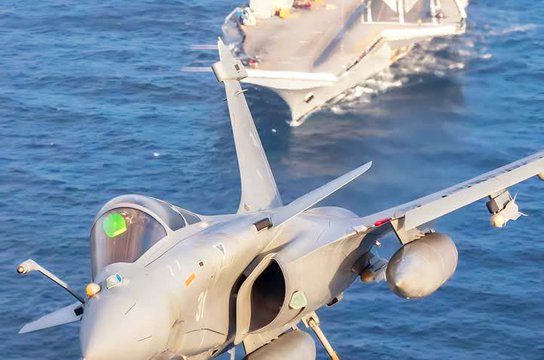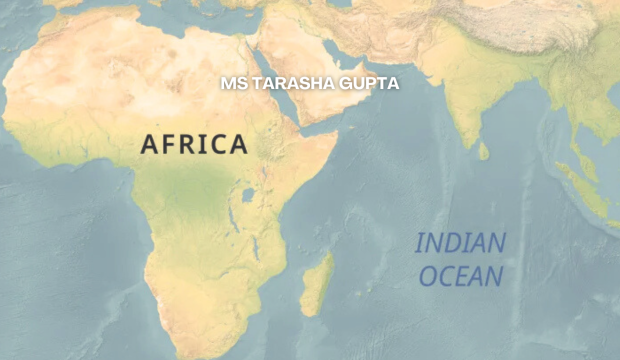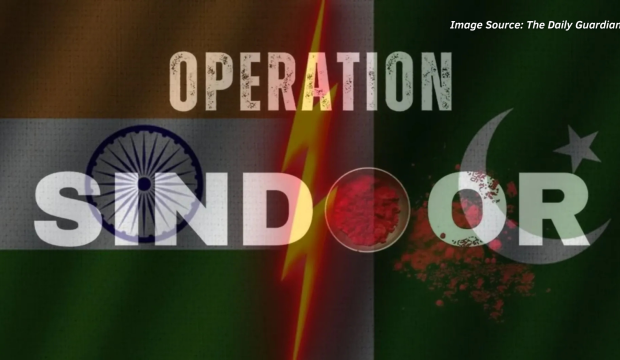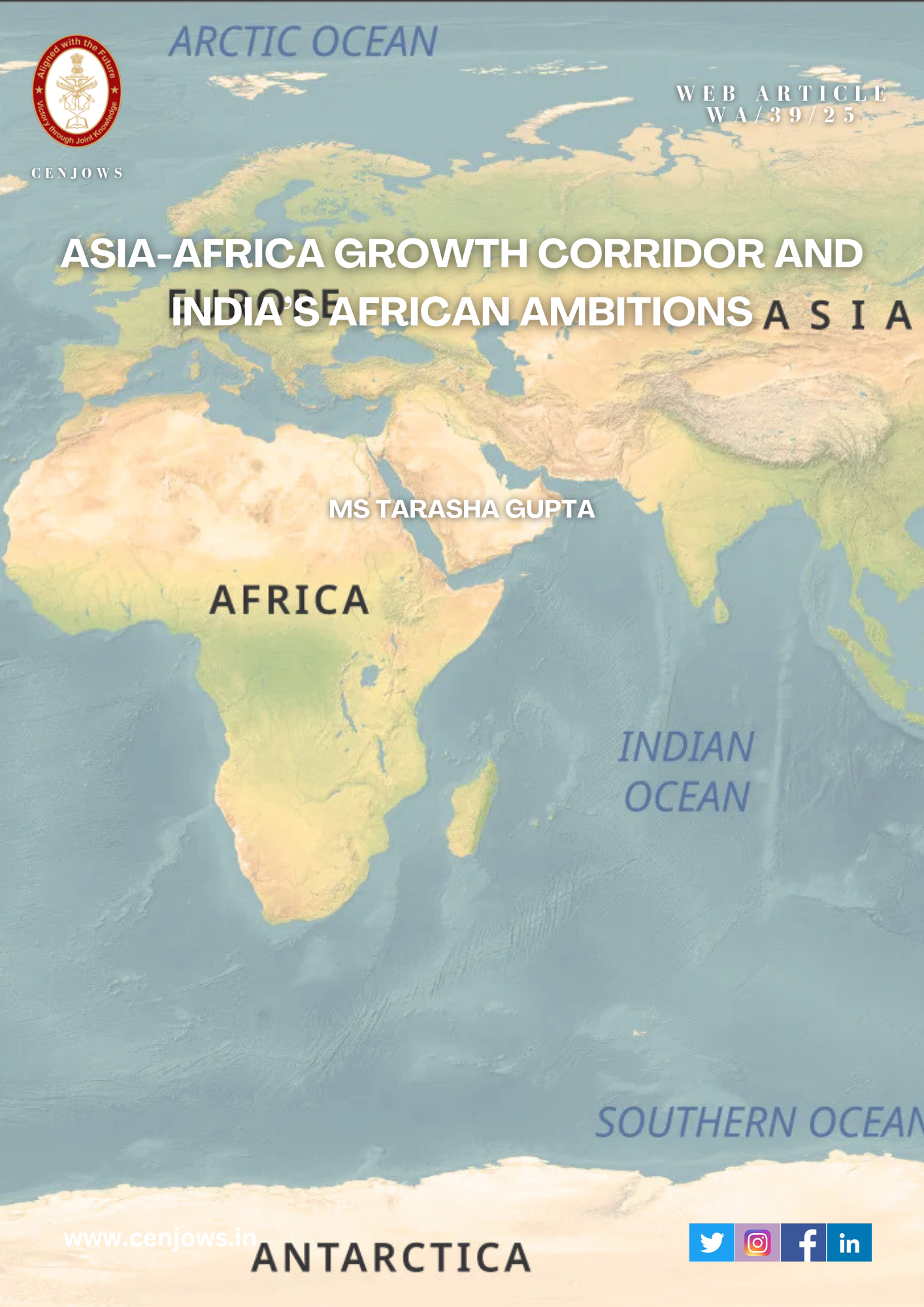“Every factor was against us. The only sensible thing to do was to try and get a settlement, even though it might be second best, because if we did not, we stood to lose everything. The very fact that Pak had to be content with waters of three Western Rivers underlined the importance of having physical control over the higher reaches for max utilization of the growing needs of West Pak. In my mind, therefore, the only solution of the Kashmir Issue acquired a sense of urgency on the conclusion of the treaty”.
Pak President, Fd Marshal Mohd Ayub Khan
Water, air and sunlight are three important resources for sustenance of life on the planet earth. Land holds 29% while water 71% area in the globe but more important is that only 3% (of total water) is fresh water[1]. While human race has hardly any control on air and sunlight, water from time immemorial has always been used by various kingdoms / states / groups of people as a significant aspect of their respective national security policy to exercise their influence over their adversaries through control / denial of water resources. As water is present in some form or the other in most of the constituents of the national security, with depleting resources and increasing demands the situation is gradually becoming extremely critical and a number of flash points for future conflicts are emerging. Responsible nations do take measures to prevent conflicts and resolve issues through negotiations / treaties, wherein the stronger nation always imposes their will on others. While India being a responsible nation hurriedly signed the treaty without taking into acct of national security, but failed immensely to impose his will on Pak, and hence the outcome. These treaties are bound to be challenged due to ever changing geo-pol, socio and security equilibrium.
Aim
To analyse Indus Water Treaty from prism of national security.
Scope
The article is covered under following parts:-
(a) Part I : Understanding Indus Water Treaty (IWT).
(b) Part II : Analysis and Obsns on IWT.
(c) Part III : Recommendations – India’s Apch to IWT.
PART I : UNDERSTANDING INDUS WATER TREATY (IWT)
Background
It is essential to peep into history to understand the then geo pol environment which led signing of the IWT between India & Pak, two nations who have been apportioned and fought wars. The Indus Basin, rising from south – western Tibet and winding through Kashmir before entering in Punjab and emptying into the Arabian Sea, is one of the world’s most homogenous physiographic regions. Indus basin covers large area divided between four Countries, Pak having biggest chunk of it Fig1. Sindh province was devoid of water due to its non-availability in proportion of irrigable land the problem further aggravated on construction of Upper Badi Doab Canal (UBDC) in 1859 and subsequently triple canal 1907-1915, by the Britishers, for enhancement of agriculture in Punjab. Lack of storage capacity led to competition for run of the river and thus dispute between the states aggravated. Finally a judicial commission was established in 1942 to resolve the water dispute between Sindh and Punjab but no avail till 1947. British Parliament passed the Indian Independence Act on 18 Jul 1947 and formed Boundary Commission under C Radcliffe to decide the boundary between the two resultant sovereign countries. Thus the water dispute between two states has grown into dispute between two nations. Radcliffe offered both Jinnah and Nehru to resolve the water distribution with mutual consensus, but no avail.
“What India do with India’s Rivers, was India’s internal affair”. JL Nehru
“I would rather have Pakistan full of desert than with fertile fields, watered by the courtesy of Hindus of India”. MA Jinnah

Fig 1 : Indus Basin
The subsequent events led to negotiation on water sharing during which the Punjab Partition Committee decided to have arrangements as pre partition but the challenge was valuation of canal systems. The matter was considered more technical and agricultural / economy dominated rather than security issue, thus involvement of Security Forces were completely disregarded. Finally, after rounds of negotiation the matter was referred to Arbitration tribunal. The Standstill Agreement was arrived between the Engrs of East and West Punjab which decided water allocation at existing levels, allowing discharges from head works on the UBDC, the Dipalpore Canal and Bahawalpur Canal systems with the time limit till 31 Mar 1948. West Pakistan was directed to develop other means to sustain irrigation, however no infra progress made by Pak. Accordingly on 01 Apr 1948, India stopped water from Ferozpur Head Works to Dipalpore Canal and two main branches of UBDC. It was peak season for Rabi which started getting destroyed due to lack of water in Pak. It has been established that stopping water was not out of military collusion rather India’s own need to establish rights over disputed rivers, and channelise resources towards development[2]. Pakistan never expected of this action by India and imposed Pol and Mil threat to India. Once again Engrs from both Nations met and Delhi Accord was signed on 04 May 1948, accordingly India to resume water supply and Pak to find alternate means, also till then Pak was supposed to pay the cost of water to India. After one year in Jun 1949, Pak stopped payments and threatened to approach World Court of Jurisdiction, which was objected by India suggesting bilateral resolution.
The Treaty
Mr David Lilienthal, past Chairman of Tennessee Valley Authority, visited India and later published articles on Indus water, suggesting resolution of Indus water system with intervention of the World Bank. In 1951, Mr Eugene Black, Chairman World Bank, has invited PMs of both India and Pak and initiated outline plan on Indus water distribution. Subsequently series of meetings of Engrs from both the countries and intervention of World Bank, final outcome was that entire water of Western Rivers (Indus, Jhelum & Chenab) with some restrictions to go to Pak and Eastern Rivers (Ravi, Satluj & Beas) to India. Also India to give part amt to Pak for necessary infra constr and bal amt was to be managed by the World Bank. The Indus Waters Treaty (IWT)[3] that delimits the rights and obligations of India and Pakistan for the use of waters was finally signed in 1960 by the then Indian Prime Minister Jawaharlal Nehru and Pakistani President Field Marshal Mohd Ayub Khan, with the World Bank acting as its third party guarantor.

Fig 2 : Western & Eastern Rivers
The Treaty (12 x Articles and eight Annexures) sets out a mechanism for cooperation and information exchange between the two countries regarding their use of the rivers, known as the Permanent Indus Commission, which has Commissioner from each country. The Treaty also sets forth distinct procedures to handle issues which may arise[4], ‘questions’ are handled by the Commission, ‘differences’ are to be resolved by a Neutral Expert, and ‘disputes’ are to be referred to a seven-member arbitral tribunal called the ‘Court of Arbitration’. As a signatory to the Treaty, the World Bank’s role is limited and procedural. In particular, its role in relation to ‘differences’ and ‘disputes’ is limited to the designation of individuals to fulfil certain roles in the context of Neutral Expert or Court of Arbitration proceedings when requested by either or both of the Parties.
PART II : ANALYSIS AND OBSNS ON IWT
“The Indus Treaty represents the most generous water sharing agreement, by upper riparian country, in modern world history, reserving 80.52% of waters annually for Pak”.
Brahma Chellaney
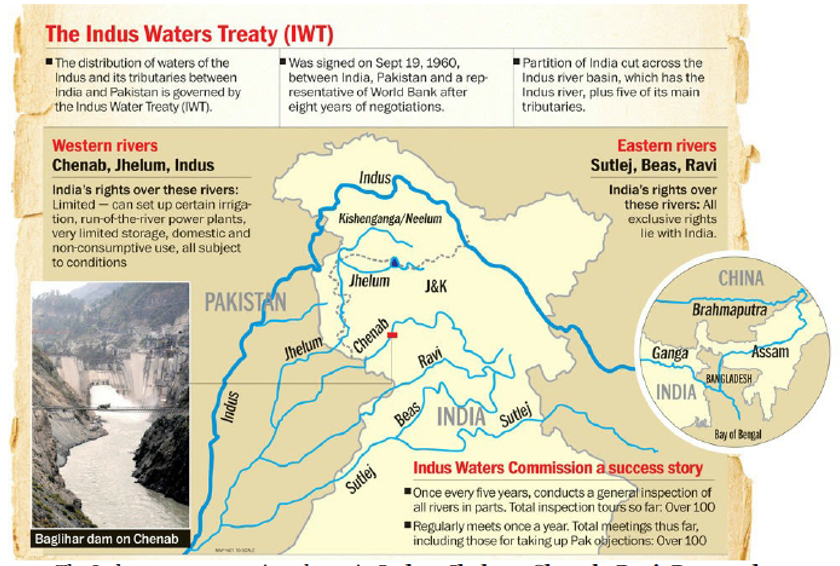
Fig 3 : IWT with Layout of Eastern & Western Rivers
The Indus Water Treaty was finalised after 13 yrs of independence in 1960 with involvement of the World Bank which has got no organisational say in water treaties across the globe. The leverage attained by India being upper riparian over Pak post partition, were tremendous, however the treaty has always been overshadowed by foreign policy interests, local concerns and demands rather than national security. It is a brutal fact of history reflecting narrowest vision and disrespect to national security as the negotiations continued on water sharing between the two nations while Punch (J&K) was under siege by Pak Army / Militia and locals were facing all sorts of atrocities.
(a) Popln – Water – Irrigated Land Ratio. The Indus River Basin (IRB) contains approx 26 mn acres of irrigated land. The mathematical division of rivers (82.5% water to Pak) led 21 mn acres of irrigated land and ten cnls for Pak whereas India with 5 mn acres of irrigated land and only two cnls. However, in this mathematical division the significant issue which was neglected completely was population. Pak Punjab with 25 mn people got more than 50% water, whereas Indian Punjab with 21 mn population with less than 20% irrigated land were allotted only 20% of water[5]. This created imbalance in water to land to popln ratios, which was more detrimental to Indian Punjab.
(b) Disjointed Efforts. The IWT is highly influenced by US-Canadian arrangement on trans boundary water resources thus few disjointed provisions were replicated in the treaty. The North American arrangement focuses on the joint, integrated management of the entire range of trans boundary water resources and not on the partition principle as the case in IWT. Moreover, the Canadian-US commission has wide jurisdiction and even quasi-judicial powers, the Indus Commission Mission[6] and their functions were narrowly defined on purpose and were mainly restricted to the negotiation of arrangements for the technical implementation of the terms of the Indus Treaty itself.
(c) Limited Scope. The scope of the treaty kept restricted vis a vis other treaties of US-Canadian and Mexico-US International Bdy and Water Commission (IBWC) which focused on entire ecosystem (air, land, lakes, plant life, wild life and humans), administration of irrigation, hydropower functions, flood control, seasonal adjustments and future river devp plans[7] etc. Article VII (half page in two paras) on ‘Future Cooperation’ of the IWT only emphasizes on each country informing and getting mutual consent on any construction on the river. The Indus Commission merely serves as the bilateral channel for Data exchange.
(d) Devoid of Climate Change and Tech Issues. The treaty doesn’t cater for incr in popln thus ever growing water demand for social and agricultural needs. The need for integrated mgt is being underscored both by the water stress arising from the population and devp pressures in both the countries and also by climate change, which threatens to diminish basin resources. The aspect of global warming melting glaciers thus reduction in water flow and avbl, increased silting effect, new technologies on water detection and reduction in water wastage in future has not been catered in the treaty. Also no provision of penalty on either country on losing water to sea due to lack of interlinking projects, silt prevention and other measures.
(e) Provn of Neutral Expert / Arbitration. Article VI & VII of the treaty have provn of exchanging data and future cooperation with Permanent Indus Commission between the two countries. Corresponding Annx D & E also have provn of generation of hydroelectric power and water storage by India on Western Rivers and Annx F & G contains provn for neutral expert & court of arbitration in case of disagreements/disputes. These provn were to facilitate mutual resolution of differences and disputes between the two countries. Pak misuses these provn to seek international intercession and delay the projects, although the treaty permits India within clearly specified constraints to tap some of their water resources for local irrigation, hydropower generation, household and non-consumptive uses[8]. Well known case of Baglihar run off the river hydro water project, World Bank appointed neutral expert ultimately ruled in India’s favour, however, it overall delayed the project and increased the cost.
(f) China’s Riparian Status. Indus and Sutlej are two major rivers originate from China flows through India-Pak and finally ends in Arabian Sea. While India may be Upper Riparian state for Pak but it remains Lower Riparian for China. Therefore, aspect of cont of water will always remain with China, who has not been engaged in the treaty. China has always evaded water treaty, even refusing to allow officials from lower riparian state to inspect any of its upstream water projects, let alone to accept third party adjudication over any issue of concern whereas India grants onsite access to both downstream states. Water is a key security issue in India – China relations as a result of China’s mega water projects on the Tibetan Plateau incl inter basin and inter river transfer plans. More so India’s heavily populated areas, acute dependency on water from cross border rivers of Tibet and the consequent vulnerability to China’s potential use of water as a political instrument is completely missed out while drafting the IWT. While China has neither shown any interest nor the inclination to sign any water treaty, India by hurriedly signing the IWT lost water as source of pol and mil leverage against Pak.
(g) Kabul River. Pak and Afghanistan currently share nine rivers with annual flows of about 18.3 mn acres feet (MAF) of which the river Kabul accounts for 16.5 MAF & river Chitral, which originates from Pakistan, joins the river Kabul near Jalalabad contributes about 8.5 MAF as major tributary of river Kabul (Fig 4)[9]. This aspect of addl water in Indus being available only to Pak was completely missed out while calculating river / water distr in IWT.

Fig 4 : Rivers in Afghanistan / Pak
(h) Strengthen India’s Stature? IWT serves as proof that legally binding interstate basin arrangements can be successfully concluded between adversarial states. The complex Indus Water Treaty has survived wars and other major bilateral crises and the PIC (Permanent Indus Commission) has met even when the relationship between the two neighbours were seriously strained. This may appear as a significant outcome of the treaty and also strengthened the global stature of India, but the moot question is that how come a treaty remained insulated even when sovereignty of the nation was at stake?
(j) Losing National Security Leverage Pak was exceptionally vulnerable in the period up to 1960s to India’s ability to punitively cut off or hold water supplies, given that partition left the head works of main irrigation cnls in India. Such was India’s leverage then yet India didn’t use that leverage even when Pak waged war and occupied more than one third of the J&K state in 1947- 48 and continues to hold. It may be seen as our culture or Pol ideology to keep Security Apparatus at bay from national strat plg architecture which resulted in repeated catastrophe for the nation.
“Canal Waters dispute has nothing to do with Kashmir issue we can’t stop Kashmir waters running into Pak it’s an engineering matter and should be dealt as such”[10]
PM JL Nehru (20 Sep 1951)
“No army, with bombs and shellfire, could devastate a land so thoroughly as Pak could be devastated by the simple expedient of India’s permanently shutting off the sources of water that keeps the fields and people of Pak alive”[11]
(k) Treaty of Cooperation? The aim of the treaty was to achieve cooperation between the two countries in resolution of water issue. How far have we achieved this coop with Pak? A significant aspect between India and Pak’s geo pol landscape is the transnational nature of water resources in disputed or occupied or in regions affected by ‘separatists’ unrest. Hardliner forces in Pak, Islamists and mil have sought to keep the Kashmir issue alive by linking Islamabad’s intent to change the territorial status quo to the control of rivers that are the lifeblood for Pak. The treaty failed to turn water into a source of cooperation between two nations as new water disputes have continued to flare. State sponsored Terrorism is continued with add on of drug, wpn and fake currency supplies from Pak.
“The issue of Kashmir and the distribution of Indus waters were interconnected; any lasting peace would have to be based on the fair distribution of the Indus waters from the Pakistani perspective”
President Parvez Musharraf
(l) Provn for Abrogation. One of the significant impediment in the treaty is that there is no time limit for treaty, its eternal. The only way it can be abrogated is by both the nations who should agree to abrogate it through another treaty. Which in near future not feasible as Pak will never give away its booty being in advantageous position.
(m) Role of World Bank. The Bank was signatory to several provisions, responsible for the operation of the Indus Basin Development Fund, its role of conflict resolution as well as the sharing of canal waters during the transition period. Accordingly the Bank effectively withdrew in 1970 leaving both parties to rely on the Commission for smooth Treaty implementation. The Bank’s role is immaterial or ceremonial in any potential arbitration (Article IX), as Bank’s President can only nominate a person to draw lots to facilitate arbitration umpires when India or Pakistan fail to agree over any issue. World Bank’s decision to “pause”, in December 2016, or “lift the pause” of its earlier decision is a clear indication that the Bank wants to get actively involved in pol affairs of these countries. This uncalled-for notification of the World Bank is against the spirit of international law, principles, general and specific treaty interpretations, principles of customary international law and settled understanding of State practices in international law[12]. The Bank had a role before 1970 during the transition period of operations. Even during the 1960s, differences were effectively and amicably dealt by the Indus Waters Commission. Only the wise leadership of both countries can properly settle differences bilaterally without giving the World Bank any leeway in the implementation process.
The treaty was strangely viewed by the nations as a ‘giveaway’ of their respective water interests and unfortunately is more a hindrance than a help to forward thinking. Through the terms designed for partitioning of rivers, the pact treats both parties as opponents and not partners. The treaty’s entire emphasis is on defining the terms and conditions of the division of rivers, not on encouraging its parties to jointly and holistically manage basin resources. The IWT may have prevented ‘another Korea’ and achieved a mutually agreed ‘divorce settlement’ but it did not fundamentally change Pak’s lower riparian angst nor its perception of upper riparian dominance of India.
“Pakistanis who believe that they can survive without Kashmir are wrong, the Pak eco is dependent on agriculture and hence on water and therefore on Kashmir”
Mohd Anwar Khan, President PoK
PART III : INDIA'S RECOMMENDED APPROACH TO IWT
After 63 years of signing of the treaty now it confronts a fresh social, pol & ecological challenge which makes this article relevant and contemporary. It highlights the perpetual mistakes done by the polity and bureaucracy by keeping Indian Armed Forces at bay in decision making process on matters of national security. The outcomes are well obvious and lesson for reconciliations everywhere. In past the Govt has not sought to draw a link between water and terror, but it is apparent that Pak with destructive intentions cannot reasonably ask India for indefinite liberality on water supplies. IWT being a social, eco, security and sensitive geo pol issue, India’s current apch to resolve / attain favourable status is needed to be multipronged. Few suggestions are enumerated as under:-
(a) Renegotiation or New Treaty. Pak ulterior motives are to challenge each proj of India on Western Rivers and seek international intercession, by invoking treaty’s conflict settlement provn are quite obvious. It has over delayed large no of hydro proj in J&K. The World Bank has nominated a neutral expert (Indian Demand) in Apr 2022, and simultaneously a Chairman of Court of Arbitration (CoA) on Pak demand on spat over Kishenganga & Ratle proj. India considers the two concurrent processes to resolve the dispute is violation of the provision of the graded mechanism prescribed in the pact. This has led India to seek a renegotiation on existing or a new treaty. On 25 Jan 2023, India has issued a notice to Pak for modification of IWT due to intransigence in resolving disputes over Kishenganga and Ratle hydro power proj[13]. India has confirmed receipt of reply written by Pak Indus Water Commissioner to his Indian Counterpart in Apr 2023[ii]. While further actions are on, it is strongly recommended that being national security issue, representation of Army while drafting new treaty must be considered.
“Revocation of the Indus Water Treaty by India can be taken as an act of war against Pak”.
Sartaj Aziz, Pak Minister
(b) Unilateral Withdrawal. The treaty is of indefinite period and there is no provn of unilateral withdrawal. The treaty can be abrogated only by both the nations by agreeing to another treaty to abrogate. However under Article 62 of the Vienna Convention on the Law of Treaties, a party can terminate its obligations or formally withdraw from a treaty including one of unlimited duration by invoking a ‘fundamental change of circumstances’ as having both significantly altered the bal of obligations and undermined the essential basis of its original consent to the international agreement[15]. The ramifications and counter actions could be approaching International Court of Justice (ICJ) by Pak against India’s unilateral withdrawal[16]. The implications of unilaterally suspension of treaty and stoppage of water may damage India’s image as world / G20 leader, project as irresponsible nation as water is considered basic need and also lose moral resp to challenge China on similar action, if any, on Brahmaputra, Indus and Satluj.
(c) Move the Masses. The present treaty has been unpopular in J,K&L where it is widely viewed as denying the locals eco accrue through water resources, agricultural and industrial growth. J&K State legislature went to the extent of passing a bipartisan resolution calling for review and annulment of the IWT[17] in 2002. India must take this opportunity to further unite and enhance awareness to the masses against ulterior motives of Pak against the devp of J&K by creating road blocks in constr of hydro power proj thus align them to nation building theme.
(d) Infra Devp in Afghanistan. India believes on ‘Vasudhaiv Kutumbakam’ (World is Family) concept and executes through extending humanitarian assistances to other nations be it HDR msns, COVID Vaccine or construction works for betterment of local populace. India has already signed MoU worth $ 236 mn with Afghanistan on building Shahtoot Dam on River Maidan (tributary of R Kabul) which will facilitate irrigation of 4,000 hectares of land and provide drinking water to 2mn residents of Kabul. However, it will restrict water flow of Kabul R which joins Indus R in Pak. Afghanistan’s authorities with the help of Indian experts have completed the feasibilities and detailed engineering of addl 12 hydro-power projects with capacity to generate 1,177MW of electricity to be built on the river Kabul. India also helped Afghanistan in repairing the Friendship Dam (Salma Dam) on the river Chishti-e-Sharif in Herat province. These Dams will enable Afghanistan to overcome water scarcity and become self-reliant in electricity production also sell electricity to countries like Pakistan[18].
(e) Devp of Capb & Capacity. Presently India has ltd hydroelectricity genr capb of 18652 MW from Western Rivers. Also only 0.792 mn acres out of 1.3 mn acres of irrigation land is being utilised. India is having lack of storage capacities thus large quantity of water authorised to be used by India of Eastern as well as Western Rivers, is flowing to Pak. The same water is not only being used by Pak for irrigation but also filling their DCB and developing defence oriented canals to be utilised against Indian Armed Forces. India must devp capacity to exploit full potential as authorised in the treaty and prepare for more. Few recommendations are as under :-
(i) Prevent leakages from the Eastern Rivers – Divert excess water to Haryana, Punjab & Rajasthan by constr of new cnl sys.
(ii) Generate power & irrigation for Punjab and J&K (Pathankot) by new proj as Shahpurkandi Proj and Ujh Multipurpose Project on tributary of Ravi.
(iii) Constr of second Ravi Beas Link Below Ujh & constr of barrage on Ravi, diverting water to Beas
(iv) Impound 36 MAF for Irrigation and harness max hydro-elec potentials of Western Rivers by constr of Dams with extn capacity in future.
(v) Execute long pending National River Water Linking Project which will improve on water management.
(f) Exploit Pak Fault Lines.
(i) Pak’s Lower Bank Outflow Drain (LBOD) runs through Indian side of Kore Creek in Rann of Kutch before meeting Arabian Sea (Fig 5). LBOD is main cause of flooding of Indian side with sea water. LBOD was never mentioned in the treaty in spite of being part of Indus R re-entering India.

Fig 5 : Lower Bank Outflow Drain of Pak
(ii) Acute Scarcity. While population of Pak is increasing there is acute water scarcity with only 30 days water storage capacity. Highest gap between demand & supply was 4% in 2011 is likely to become 31% in 2025, making Pak a ‘Water Scarce’ country. 92% of Pak land is arid / semi-arid requires water for irrigation. 75% of overall surface water diverted to canals however only 30% reaches to crop due to seepage, poor irrigation sys and ltd hydroelectric generation power. Only 22% of Pak is forested, which has lost 35% of its forest cover till 2021. Lack of forest cover results in silting of dams & degradation of rivers[19]. Thus maximizing usage of IWT by India will create unfavourable conditions which will further deteriorate Pak’s scarcities.
(iii) Influence Pak internal dynamics by reinforcing sympathy, highlighting biased attitude of Pak vis a vis other regions and develop JK&L in all spheres (agriculture, social and eco) thus creating discontentment amongst the local populace in PoK / Baluchistan / Punjab & Sindh.
Conclusion
The fresh water scarcity crisis is emerging as a defining pivot of Indian subcontinent politics and security, as it is home to more than 21% of world’s population with barely 8.3% of global water resources[20]. The fast growing water consumption and demand owing to economic and population growth, rapid urbanization and changing lifestyles is making interstate water competition a major security issue, increasing the likelihood of geo-pol tensions and instabilities. The likely consequences extending to internal and external security, economic growth, social progress, environmental sustainability, food security, public health, poverty alleviation, migration flows and inter riparian relations. Outdated clauses of the treaty and their workarounds yielded policy solutions do not fully resolve either rival’s water needs. Reassessing the relevance of the IWT for the 21st century and encouraging efficient management of the Indus Basin’s resources thus deserves fresh political and military impetus.
“The Indus Waters: India has right to those waters… it flows into Pak, flowing through the Pak, the water goes into the sea. That water belongs to Indian farmers. We will do whatever we can; to give enough water to our farmers”.
Prime Minister Narendra Modi
DISCLAIMER
The paper is author’s individual scholastic articulation and does not necessarily reflect the views of CENJOWS. The author certifies that the article is original in content, unpublished and it has not been submitted for publication/ web upload elsewhere and that the facts and figures quoted are duly referenced, as needed and are believed to be correct.
References
Book
- Sinha Uttam Kumar, ‘Indus Basin Uninterrupted: A history of Territory & politics from Alexander to Nehru’, Vintage Penguin India, 2021.
- Gulhati ND Indus Water Treaty: An Exercise in International Medation’, Allied Publishers India, 1973.
- Chellaney Brahma, ‘Water: Asia’s New Battle Grourel’, Harper Collins Publishers India, 2011.
- Maj Gen AK Chaturvedi, AVSM, VSM (Retd), ‘Water a Source of Future Conflicts’, VIJ Books India, 2013
Articles
- ORF, IDSA, VIF & CLAWS.
- News Papers – The Economic Times, Tol & The Hindu.
- Web pages.
- Maj Gen Chaturvedi AK, Retd, ‘Water a Source of Future Conflicts’, Vij books India Pvt Ltd, 2013, pp 49
Uttam Kumare Sinha, ‘Indus Basin Uninterrupted : A history of Territory & Politics from Alexander to Nehru’, New Delhi : Penguin Random House India, 2021, pp 168-172
- Ministry of External Affairs, Government of India, “Indus Waters Treaty”, Media Centre, 19 September 1960, https://mea.gov.in/bilateeral-documents.htm?dtl/6439/Indus.
Fact sheet : The Indus Waters Treaty 1960 and the Role of the World Bank, 11 Jun 2018, available at https://www.world bank.org/en/region/sar/brief/fact-sheet-the-indus-water-treaty-1960-and-the-world-bank.pp 2-4.
- Maj Gen Chaturvedi AK, Retd, ‘Pakistan Dependence on IWT’, Scholar Warriors Spring 2019, available on archive.claws.in, accessed on 05 Oct 2022.
- Article VIII of Indus Water Treaty, ‘Permanent Indus Commission’, op cit.
- Report of US-Maxico Binational Council, Washington DS, Centre of Strategic and International Studies, 2003 available on https://www.csis.org>analusis>us, accessed on 18 Dec 2023.
Article III(2) and Annx C & D of the IWT. Op cit.
- Mustafa Khalid, ‘India out to Damage Pakistan’s Water Interests on Kabul River’, available on http://www.thenews.com.pk/print/125490-India-out-to-damge-Pakistans-water-interets-on-Kabul-river,3/11, Jun 05, 2016 accessed on 24 Jan 2023.
- Sinha UK, op cit, pp 229.
- David E Lilienthal, “Another Korea in the Making?” Colliers, Aug 1951
- Patel Bimal, article ‘Why World Bank Broked The IWT’, Indian Express, 17 Sep 2017, available on www.indianexpress.com, accessed on 18 Jan 2023 from crackIAS.com.
- Haider Suhasini & Bhattacherjee Kallol, ‘India sends notice to Pak to amend 1960 Indus Water Treay’, 27 Jan 2023, The Hindu avlb on the hindu.com/ news / national / india / article 66438780 accessed on 31 Jan 2023.
- PTI ‘Pakistan Responds to India’s Notice on Indus Water Treaty’, in Economic Times dt 06 Apr 2023.
- Chellaney Brahma, ‘Water : asia’a New Battle ground’, 2011, Harper Collins Publishers, Uttar Pradesh, pp 289.
- Ijaj Rana, article on ‘Pakistan: Legal Ramifications of India’s Unilateral Withdrawal from IWT’, available on mondaq.com/water/555344/legal-ramifications-of-india-39s, accessed on 18 feb 2023.
Warikoo K, ‘Indus Water treaty : View from Kashmir’, Himalayan and Central Asian Studies9, no 3 (Jul–Sep 2005) pp3-4
Ramachandran Sudha, article ‘India’s Controversial Afghanistan Dam’s’, The Dplomat, August 20, 2018, vailable on http://thediplomat.com/2018/08/indias-controversial-afghanistan-dams/, accessed on 23 Jan 2023.
- Osman Hisham & Asad Saeed, ‘Making Every Drop Count: Pak’s Growing Water Scarcity Challenges’, on iisd.org/articles/insight/Making-Every-Drop-Count, 2016.
- Chellaney Brahma, op cit, pp 277.




